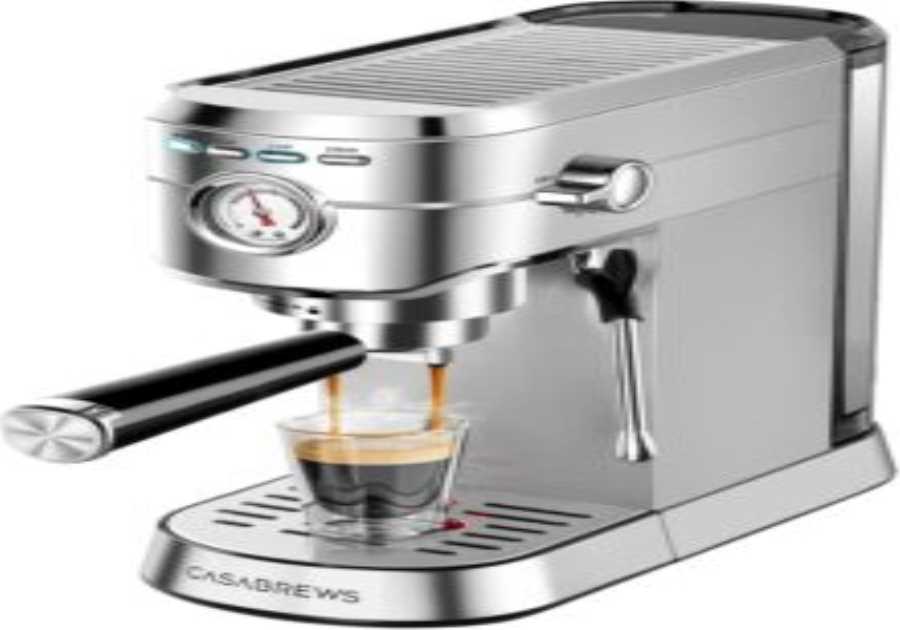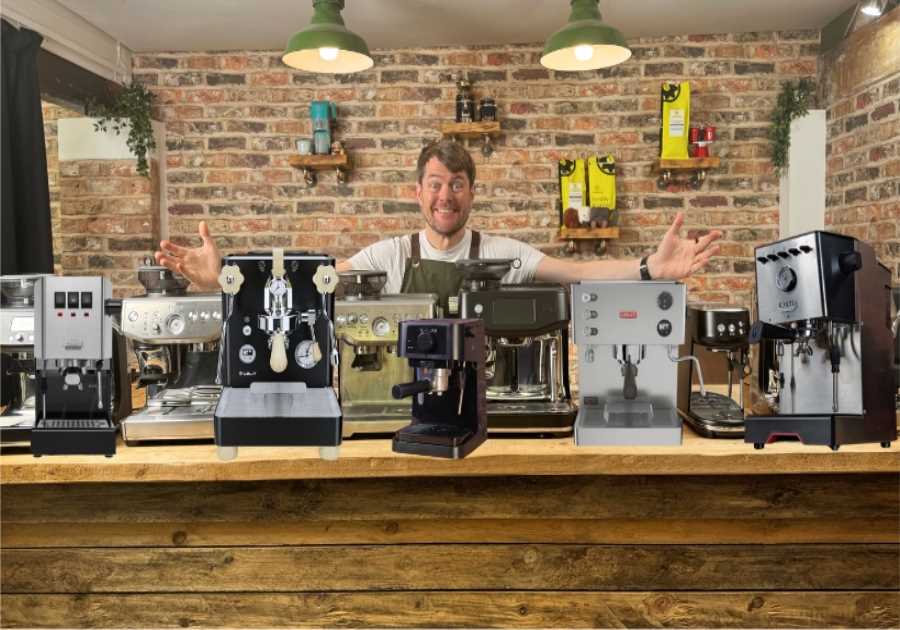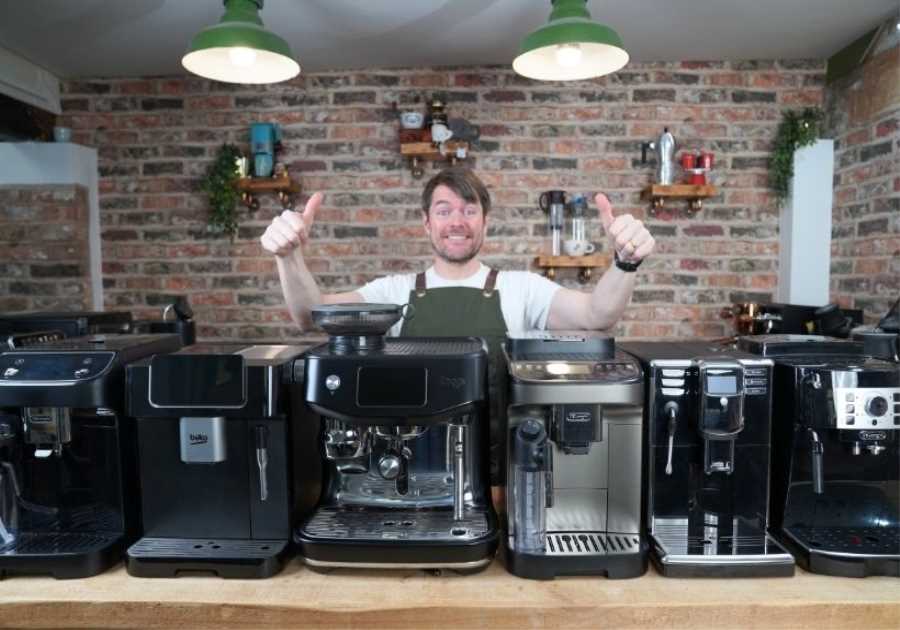As the centrepiece of the coffee shop, the espresso machine has a demonstrable impact on barista workflow, and as a result, café efficiency.
Over the years, however, espresso machines have evolved to combat these issues through new technology and more intuitive design.
To learn more about how espresso machine design affects barista workflow, I spoke to espresso machine expert Filippo Mazzoni from Gruppo Cimbali and Valerio Cometti from V12 Design. Read on to find out what they said.
You might also like our guide to tasting espresso.
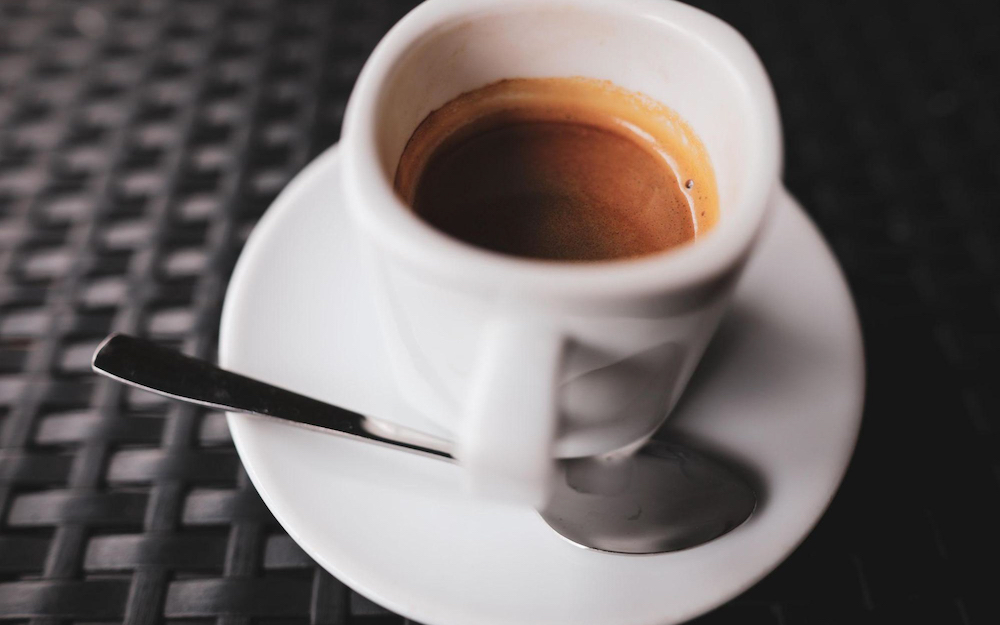
An overview: Espresso machine & workflow
Valerio Cometti is the Designer and Creative Director of V12 Design, a design agency based in Milan that has worked on espresso machines for Gruppo Cimbali.
“From our point of view, as designers, the espresso machine is becoming more and more of a pivotal part of the coffee experience,” he explains.
First and foremost, the efficiency of a coffee shop – in terms of drinks per hour – is directly linked to how well its espresso machine performs. Older espresso machines tend to be less efficient in terms of service speed, as well as increasing waste.
“You want to look for an espresso machine with sharp functionality and ergonomics,” Valerio adds. “Ultimately, this improves the coffee shop experience for everyone.”
Beyond this, the espresso machine’s location also has a massive impact on a coffee shop’s overall workflow.
If it’s located in a clean, easy-to-access area, it can improve workflow and efficiency. Conversely, if it’s in a cluttered space, it will naturally restrict access to the rest of the coffee bar.
Another thing to consider is the placement of your espresso machine in relation to your other equipment. Where is the grinder? Where will you tamp? Steam milk?
Location might not seem like a major point of concern, but by managing it, you can create a smooth flow through each station to make sure baristas don’t bump into each other and that each beverage travels in a streamlined way.
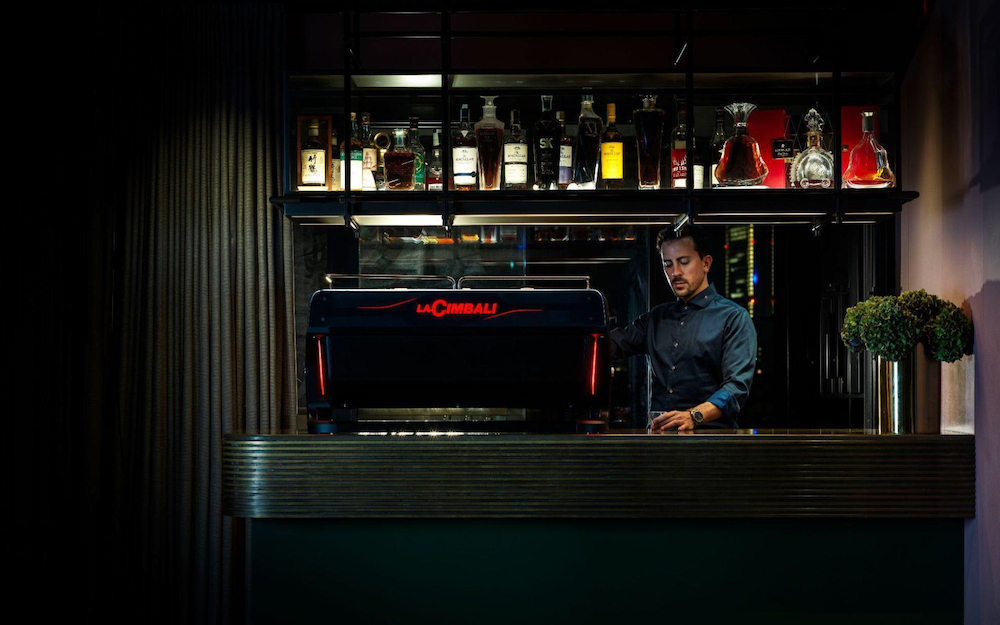
Machine design and workflow: How are they related?
As well as location and age, however, design also has an impact on barista workflow in the coffee shop.
“Design includes both beauty and functionality,” says Valerio. “Great design positively affects productivity, maintenance, communication toward the customer, and so on.”
Espresso machine size
As a general rule, a more compact espresso machine is less likely to get in the way and impede workflow.
Over the course of more than a century, a major focus for espresso machine manufacturers has been making equipment more compact. This has become increasingly possible as boilers and pumps have decreased in size.
Filippo Mazzoni is the Coffee Equipment Manager at Gruppo Cimbali. He tells me about Cimbali’s latest machine, the M200, and how it meets this existing trend.
“The M200 is a machine that was deliberately designed to be low in height and compact,” he tells me. “This is in line with recent trends of placing the machine on the front counter facing the client, allowing easy interaction with the public.”
Espresso machines with a low height and a compact design can also help baristas communicate with customers more easily, by removing any physical barriers.
Number of groupheads
There’s a simple relationship between the number of groupheads and productivity: the more groups on a machine, the more capacity you have to make drinks.
Many smaller shops operate just fine with a two-group espresso machine. But if you’re expecting to make more than 100 espresso drinks per hour during busy periods, you should consider a machine with more groups.
You’ll also need to take into consideration the balance of consistency versus productivity if you’re looking to upgrade.
Filippo explains that some machines, such as the M200, offer several models to appeal to coffee shops of varying sizes.
“The M200 range includes three multi-boiler options (GT1, GT2, and Profile), all available in two, three, or four groups.”
Boiler setup
The espresso machine’s boiler capacity and efficiency has a notable impact on a coffee shop’s volume and serving speed.
Single boiler machines use only one boiler to steam milk and heat water for espresso, which makes it difficult to pull shots and steam milk at the same time. Because of the resulting decrease in performance, this setup often doesn’t work well for high-volume cafés.
On the other hand, multi-boiler machines have one dedicated boiler for steaming milk, with another (or several others) for heating the brewing water.
Ultimately, independent boilers increase consistency and efficiency, as well as helping baristas manage individual temperatures to exercise more control behind the bar.
It’s all about finding that perfect balance between the boiler capacity and heating element output to improve consistency and efficiency.

Distance between steam wand and grouphead
The spacing between groupheads and steam wands is a small but crucial detail that’ll either help or hinder your workflow.
In many situations, a coffee bar will have one barista pulling espresso shots while another steams milk. When multiple baristas are working on the same espresso machine, it can get crowded if they don’t have enough room to work.
When it came to designing the M200, Valerio says the top priority was being sure that “the working area of the barista is uncluttered, ergonomically optimised, and rewarding”.
If groups and wands aren’t properly spaced, you can functionally limit the number of baristas who can operate simultaneously. This can be a major problem during morning rushes, for instance.
Filippo tells me the M200 is designed with “centred groups which leave large work areas at the sides dedicated to steam wands”.
“Delivery groups are positioned at an ideal distance,” he explains. “This provides baristas with all the comfort and agility they need for their service.”
Extraction technology
Today’s espresso machines are equipped with more technology than ever before. Increasingly, we’re seeing a rise in real-time brewing data to improve performance and extraction on the fly, as well as helping baristas be more precise by eliminating margins for error.
For instance, some machines utilise pressure control technology to manage flow rate, which subsequently affects the sensory profile of the espresso.
“Our pressure control system is impressive in its reliability and replicability,” he says. “Once you’ve found the right settings that extract the coffee the way you like it, the machine can infinitely reproduce the same recipe with impeccable results every time.”
In addition, some new machines also include grinder-doser systems, such as the M200’s Perfect Grinding System.
This technology automatically adjusts the dosage and grind size for each beverage using wifi, and can use up to two grinders simultaneously. This removes the need for the barista to manually set the grind size for each shot.
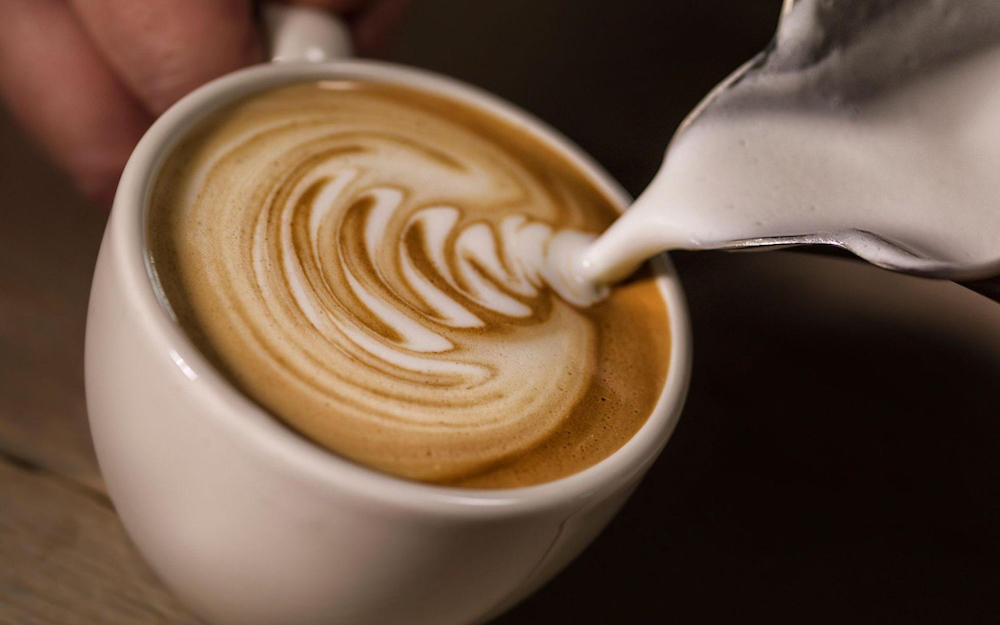
Other emerging trends in espresso machine design
While these specific areas of design have arguably been a technical focus in recent years for manufacturers, there are some other “general areas” which encapsulate the evolution of espresso technology.
Ergonomics
Ergonomics is a discipline that combines a variety of subjects – anatomy, physiology, psychology, and engineering – to study human strengths and limitations. Findings are then used to create workspaces and systems to better fit the people that are using them.
When it comes to ergonomics for espresso machines, it’s all about optimising what Valerio calls the human-machine interface (HMI).
“We reach perfection for this when you don’t even notice it,” he explains. “The technology allows the barista to move in a swift manner with a natural workflow.
“As a design firm, we intertwine our work with various concepts stemming from different fields,” he says. “The aerospace and automotive sectors in particular influenced our design choices when we thought about the ergonomics and geometry of the work area for the M200.”
Ergonomic espresso machines, which are becoming increasingly prominent, focus on improving the barista’s safety and comfort.
With the increase in digital espresso machine elements, Filippo assures me that ergonomics haven’t been forgotten for new technology, either.
“The independent display panels for every group are angled towards the barista to make it easier to read and set with spontaneous gestures.”
Integration & technology
Espresso machines are experiencing more technological innovation than ever with the integration of wifi, Bluetooth, the Internet of Things (IoT), and touchscreens.
Connectivity has increased as a result, giving users full control over the machine through digital displays or an app. In some cases, the espresso machine can even be controlled remotely.
The more data points you get from the espresso machine, the better control you’ll have over the entire espresso-making process. Filippo explains how new extraction technology has empowered baristas with this control.
“With the GT1, there is pre-infusion technology which allows the user to separately control the water quantity and pre-infusion time,” he says. “This grants complete control of this crucial part of the brewing process and guarantees an excellent result in every cup.
“The GT2 version is capable of using two different temperatures on each individual group, which can be set as desired.
“The same group can therefore brew espresso at the perfect temperature, as well as other recipes which may require a lower extraction temperature.”
We’re also seeing other integrated systems helping to automate parts of the espresso-making process that are typically prone to waste and error. Meanwhile, your machine is helping you make the best-quality coffee in the most efficient way possible.
The more information available to users, the sooner maintenance needs can be spotted, too. Ultimately, this makes it easier to stay on top of preventative care for your machine.
Energy usage
Aside from incorporating newer technology, espresso machine manufacturers have also started to focus on the environmental impact of their machines.
Valerio tells me there are many areas where we can see the impact of environmental awareness on espresso machine design. “In my opinion, the best way to make a product environmentally friendly is to make it long-lasting,” he says. “La Cimbali is doing a great job in this area, manufacturing reliable, sturdy, and long-lasting products.”
We’ve seen more environmentally friendly materials used in espresso machine construction, too. There’s been more use of metal instead of plastic, and more recycled materials involved.
Modern espresso machines are also increasingly incorporating energy-saving modes which have shorter reheating times.
“In particular, it has been shown that compared to the previous model, heating times have decreased for the M200,” Filippo explains. “With the introduction of an independent boiler, we’ve also reduced energy use for the initial heat-up phase which prepares the machine for use.
“The new M200 provides an Energy Saving mode that can reduce the performance of the machine (through, for example, switching off one or more coffee group heads) at times of low productivity.”
Features such as these make espresso machine use much more efficient by cutting down on energy consumption.
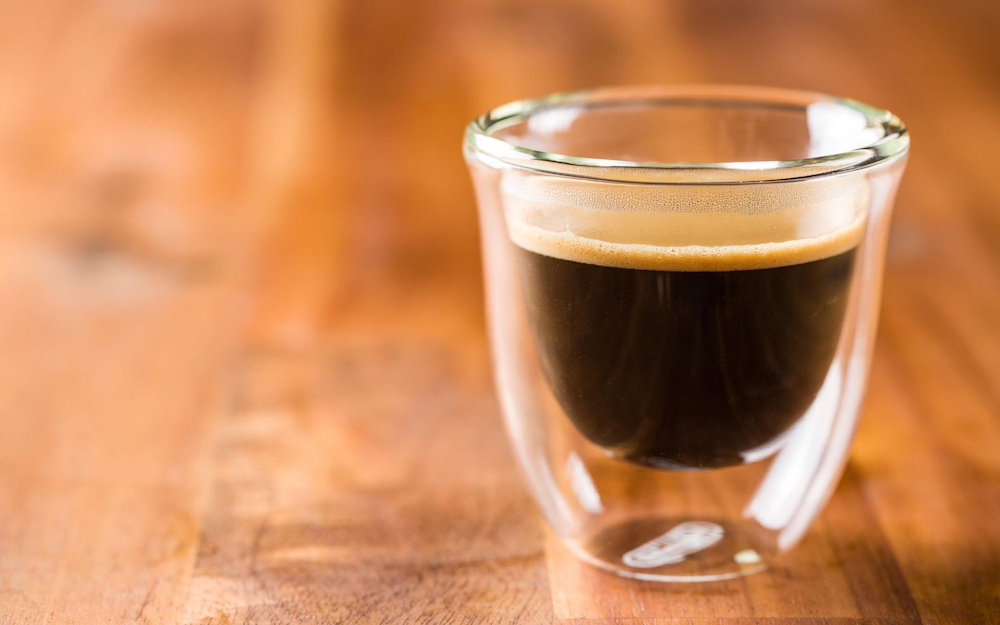
The espresso machine is a key component of any coffee shop, and it can either hurt or hinder the performance of any given location. There are a number of factors to consider, from location and size to spacing and boiler setup, which are all important.
Ultimately, as espresso machines continue to become more ergonomically designed and leverage newer technology, we’ll continue to see an improvement in barista workflow and efficiency.
Enjoyed this? Then try our article on why espresso still costs one euro in Italy.
Photo credits: Robilant Assocati
Perfect Daily Grind
Please note: La Cimbali is a sponsor of Perfect Daily Grind.
Want to read more articles like this? Sign up for our newsletter!
The post How does the espresso machine influence barista workflow? appeared first on Perfect Daily Grind.
By: Zoe StanleyTitle: How does the espresso machine influence barista workflow?
Sourced From: perfectdailygrind.com/2022/06/how-espresso-machines-influence-barista-workflow/
Published Date: Mon, 06 Jun 2022 05:27:00 +0000

